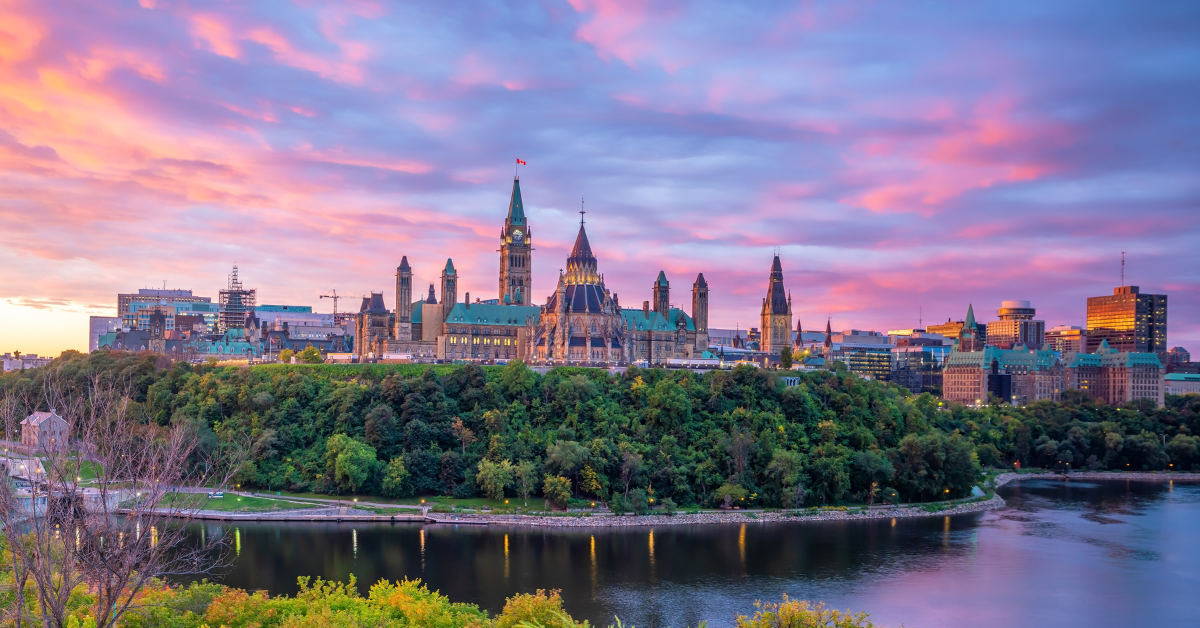Ottawa is widely recognized as the capital of Canada and is usually written in katakana. However, on rare occasions, it appears with the kanji transcription “倭塔瓦.” This article explores the background of this unique notation and examines how Japanese people perceive Ottawa in terms of culture, tourism, and sports.
The Kanji Representation of Ottawa “倭塔瓦”
Ottawa is generally written in katakana, but occasionally it is transcribed as “倭塔瓦” using kanji. This is not meant to convey meaning but simply to approximate the sound.
The practice of transcribing foreign place names into kanji has existed for centuries in both China and Japan. For example, New York has historically been written as “紐育”, and Ottawa has been represented as “倭塔瓦” in a similar fashion. However, this usage is not common in daily life and is limited to certain documents or among language enthusiasts.
The Image Japanese People Have of Ottawa
For many Japanese people, Ottawa evokes the image of a “calm and composed capital” or a “city in harmony with nature.”
- While it carries the dignity of a national capital, it does not feel economically flamboyant
- The Parliament buildings and museums stand as symbols of history and culture
- Rich natural surroundings make it attractive to tourists who prefer a slower pace
- Its reputation for safety appeals to students and long-term residents
Rather than being viewed as a tourist hotspot, Ottawa is often appreciated by Japanese people for its livability and sense of security.
Comparison of Ottawa with Other Canadian Cities
| City | Japanese Image | Characteristics |
|---|---|---|
| Toronto | Metropolis and economic hub | Skyscrapers, multicultural city |
| Vancouver | Balance of nature and city | Mild climate, mountains and ocean |
| Montreal | City of culture and arts | Strong French cultural influence |
| Ottawa | Calm and composed capital | Parliament Hill, parks, Rideau Canal |
Ottawa’s Sports Culture
Although Ottawa is Canada’s political center, it also has a vibrant sports culture. The most prominent is ice hockey, with the NHL team “Ottawa Senators” based in the city. On game days, the whole city becomes lively, and attending a match is a major attraction even for tourists.
In winter, the Rideau Canal transforms into the world’s largest skating rink, where both locals and visitors enjoy ice sports. For Japanese travelers, this provides a rare and memorable experience.
Major Sports in Ottawa and Their Features
| Sport | Features | Recommended Experience for Japanese Visitors |
|---|---|---|
| Ice Hockey | NHL team with passionate fans | Watching a game, buying team merchandise |
| Skating | Rideau Canal becomes a giant rink in winter | Skating on the world’s largest rink |
| Soccer | Local leagues are active | Watching local club matches |
| Canadian Football | Unique domestic rules | A chance to learn Canadian sports culture |
Attractions of Ottawa for Japanese Tourists
For Japanese visitors, Ottawa’s charm lies in being a “capital where nature, culture, and sports are in harmony.”
Seasonal Highlights
| Season | Main Attraction | What Japanese Visitors Enjoy |
|---|---|---|
| Spring | Tulip Festival | Flower viewing, photography |
| Summer | Rideau Canal cruises | Cooling off by the water, sightseeing |
| Autumn | Colorful fall foliage | Hiking, photography |
| Winter | Rideau Canal skating | Experiencing ice sports |
Ottawa’s defining feature is that visitors can enjoy culture, nature, and sports together in one city.
Conclusion
Although Ottawa can be written in kanji as “倭塔瓦,” this is merely a rare phonetic transcription and not a common form.
For Japanese people, Ottawa is not associated with the dazzling appeal of Toronto or Vancouver but rather with qualities like “calm,” “gentle,” and “a composed capital.”
Moreover, its sports culture and harmony with nature are deeply integrated into daily life, offering visitors a multifaceted experience. Unlike flashier cities, Ottawa presents a balanced blend of culture, history, nature, and sports, giving it a unique identity.






